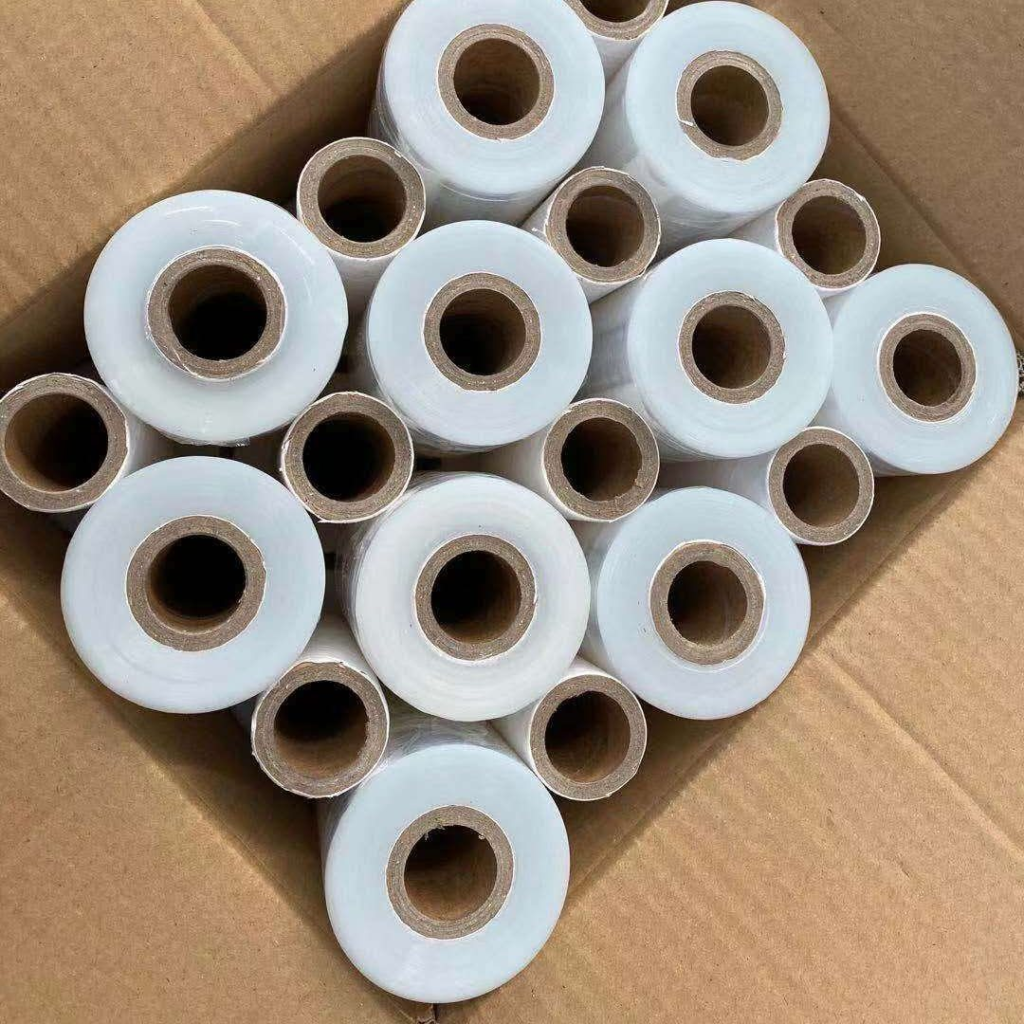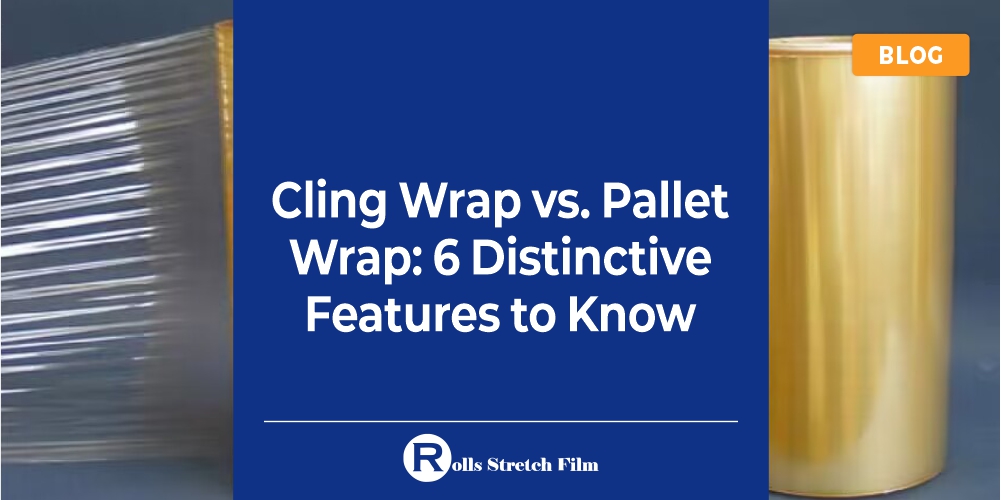Have you ever found yourself in a dilemma, choosing between cling wrap and pallet wrap for your packaging needs? It’s a common issue that many businesses and individuals face. You want to ensure that your items are securely wrapped, but you also don’t want to overspend on materials that might not be the right fit for your specific requirements.
Cling wrap and pallet wrap are both essential tools in the packaging industry, but they serve different purposes and have unique features. Knowing the differences can save you time, money, and a lot of headaches. This article will delve into the six distinctive features that set these two types of wraps apart. So, if you’re looking to make an informed decision, you’re in the right place. Stick around to discover which wrap is best suited for your needs.
What is Cling Wrap?

Cling wrap, also commonly known as plastic wrap or food wrap, is a thin plastic film primarily used for sealing food items in containers to keep them fresh. It’s a staple in both commercial kitchens and household pantries. I’ve personally found it to be a lifesaver when it comes to preserving the freshness of fruits, vegetables, and even leftovers. The airtight seal it provides helps to extend the shelf life of various foods, reducing waste and saving money in the long run.
The material that makes up most cling wrap is low-density polyethylene (LDPE). This type of plastic is specifically designed to be flexible, transparent, and adhere well to various surfaces, making it ideal for its primary function of food preservation. Over the years, I’ve come to appreciate the science behind this everyday material. Its unique properties make it not only effective but also versatile for a range of applications beyond just the kitchen.
What is Pallet Wrap?

Pallet wrap, often referred to as stretch wrap, is a highly stretchable plastic film commonly used in the shipping and moving industry. Unlike cling wrap, its primary function isn’t food preservation but rather securing boxes and products on a pallet for transport. Having been involved in logistics and shipping, I can attest to the indispensable role pallet wrap plays in ensuring goods reach their destination in the same condition they left the warehouse. It’s a crucial tool for stabilizing heavy or irregular loads during transit.
The material commonly used for pallet wrap is linear low-density polyethylene (LLDPE). This type of plastic is engineered to stretch up to 500%, making it incredibly efficient for wrapping around items multiple times. The elasticity ensures a tight hold, while its strength guarantees the stability of the wrapped items. Over the years, I’ve found that understanding the properties of pallet wrap can significantly improve the efficiency and reliability of shipping operations.
Distinctive Feature No. 1: Primary Use

Cling Wrap:
- Material composition: Primarily low-density polyethylene (LDPE).
- LDPE is flexible and transparent.
- LDPE effectively seals food items for freshness.
- Efficacious in preserving the freshness of food.
Pallet Wrap:
- Material composition: Commonly linear low-density polyethylene (LLDPE) or polypropylene.
- LLDPE and polypropylene are highly stretchable and durable.
- Ideal for securing heavy loads during shipping.
- Crucial for ensuring the safety and integrity of shipped goods in logistics.
Distinctive Feature No. 2: Material

Cling Wrap:
- Material composition: Primarily low-density polyethylene (LDPE).
- LDPE is a flexible and transparent plastic.
- LDPE effectively seals food items for freshness.
- Known for preserving the freshness of food.
Pallet Wrap:
- Material composition: Commonly linear low-density polyethylene (LLDPE) or polypropylene.
- LLDPE and polypropylene are highly stretchable and durable materials.
- Ideal for securing heavy loads during shipping.
- Crucial for ensuring the safety and integrity of shipped goods in the logistics sector.
Distinctive Feature No. 3: Strength and Durability

- Cling Wrap:
- Design & Purpose: Primarily designed to seal food items.
- Characteristics:
- Flexible and lightweight.
- Shortcomings:
- Cannot withstand heavy loads.
- Not designed to endure external pressures.
- Not recommended for heavy-duty applications.
- Personal Note: While excellent for sealing food, it isn’t suitable for strenuous tasks.
- Pallet Wrap:
- Design & Purpose: Engineered specifically for securing heavy or bulky shipments.
- Characteristics:
- Possesses high tensile strength.
- Can stretch up to 500% without breaking.
- Strengths:
- Keeps items secured during transit.
- Durable and resilient against external pressures.
- Personal Note: Based on personal usage in various shipping scenarios, it is robust and reliable for long-haul transportation.
Distinctive Feature No. 4: Thickness

- Cling Wrap:
- Thickness: Ranges from 8 to 12 microns.
- Characteristics:
- High flexibility due to its thinness.
- Easily wraps around food items of different shapes and sizes.
- Advantages:
- The thinness ensures a snug fit, making it excellent for food preservation.
- Personal Note: The thinness of cling wrap is one of its standout features for food preservation.
- Pallet Wrap:
- Thickness: Often between 15 to 30 microns.
- Characteristics:
- Thicker material gives greater tensile strength.
- Role & Importance:
- Primarily used for securing heavy or bulky items for shipping.
- Ensures the wrap can withstand transportation pressures.
- Personal Note: Based on my shipping experiences, the thickness of pallet wrap is crucial for its industrial effectiveness.
Distinctive Feature No. 5: Clinging Ability

- Cling Wrap:
- Adhesion Ability: Designed to stick to itself and other surfaces easily.
- Primary Use: Ideal for wrapping around food items.
- Outcome: Creates an airtight seal.
- Personal Note: The clinging ability of cling wrap is vital for preserving food freshness over extended periods.
- Pallet Wrap:
- Adhesion Ability: Primarily clings tightly to itself.
- Primary Use: Essential for holding items securely on a pallet in the shipping industry.
- Outcome: Focuses on maintaining the integrity of a load, rather than sealing from external elements.
- Personal Note: In various shipping scenarios, pallet wrap proves effective in keeping items securely in place during transit.
Distinctive Feature No. 6: Cost and Availability

- Cling Wrap:
- Cost & Affordability: Generally more affordable for the average consumer.
- Availability: Can be found in almost any grocery store.
- Use Case: Convenient and cost-effective for everyday food storage.
- Personal Note: Cling wrap offers a convenient and budget-friendly solution for daily food storage needs.
- Pallet Wrap:
- Cost: Typically more expensive, often purchased in bulk.
- Availability: Not found in regular grocery stores; usually sourced from specialized suppliers or business-oriented online platforms.
- Use Case: Primarily for industrial use to ensure security during shipping.
- Personal Note: While the initial cost might be higher, the investment in pallet wrap is justified by the enhanced security and stability it provides in shipping scenarios.
Conclusion
In summary, understanding the differences between cling wrap and pallet wrap is crucial for making informed decisions, whether you’re looking to preserve food or secure goods for shipping. From their primary uses and material composition to their strength, durability, thickness, clinging ability, and cost, each type of wrap serves specific needs. I’ve personally navigated the complexities of choosing the right wrap in various scenarios, and I can affirm that this knowledge can save you both time and resources.














